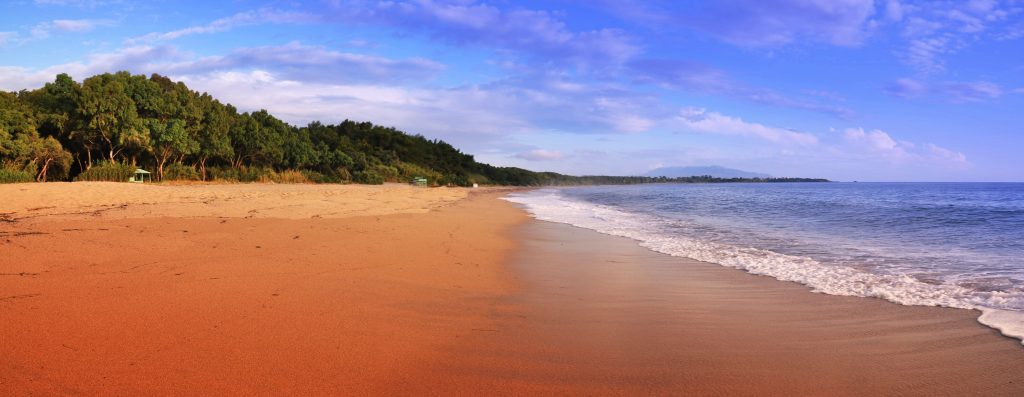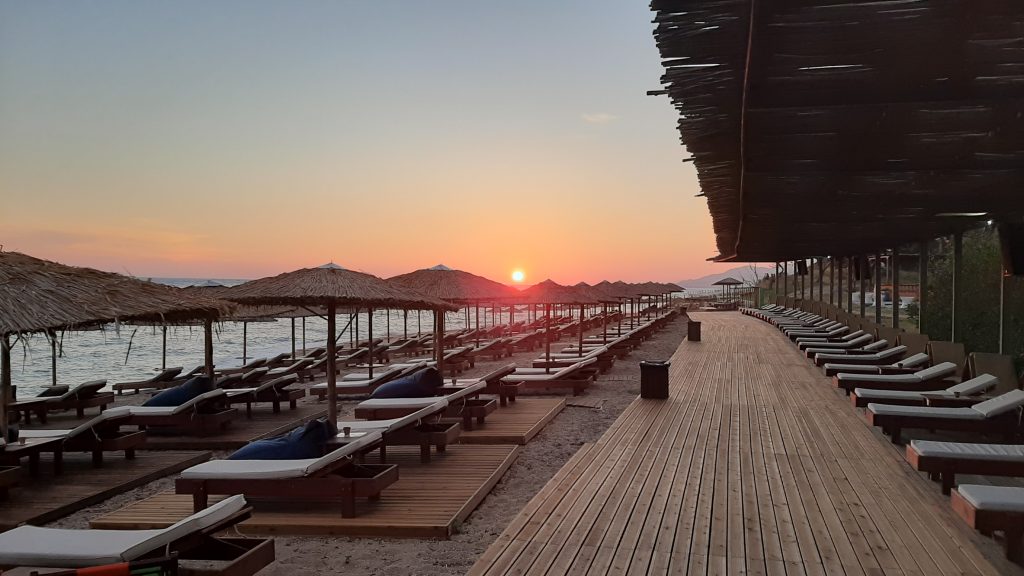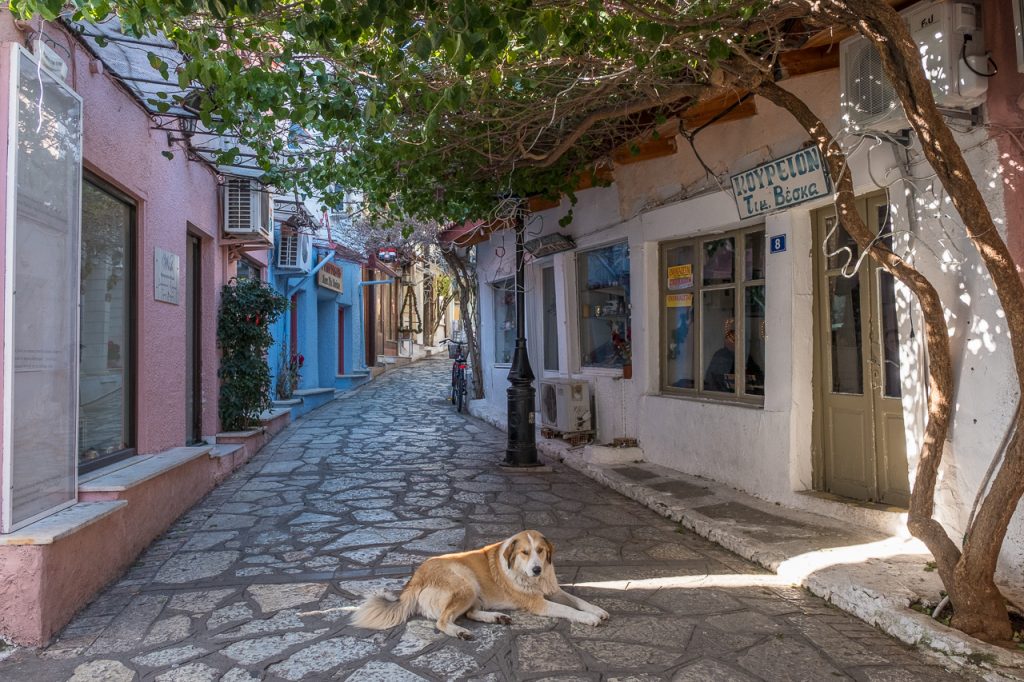About Preveza
Preveza (Greek: Πρέβεζα, pronounced `{`ˈpreveza`}`) is a city in the region of Epirus, northwestern Greece, located on the northern peninsula at the mouth of the Ambracian Gulf. It is the capital of the regional unit of Preveza, which is part of the region of Epirus. The Aktio-Preveza Immersed Tunnel – the first and so far only undersea tunnel in Greece – was completed in 2002 and connects Preveza in the north to Aktio in western Acarnania in Aetolia-Acarnania south of the mouth of the Ambracian Gulf. The ruins of the ancient city of Nicopolis lie 7 kilometres (4 miles) north of the city.


Despite the three views which have been presented by the academic society on the origin of the name ``Preveza``, the most accepted view is that Preveza means Passage, and that the word reached this form from the Slavic, through the Albanian language. The first view suggests that the name ``Preveza`` originates from the Slavic word prěvozъ, meaning passage. This view is adopted mainly by: Max Vasmer, Diogenis Chariton, Fyodor Uspensky, Ioannis Demaratos, Peter Soustal & Johannes Koder, Alexios G. Savvides, Elias Vasilas, Nikos D. Karabelas, Demosthenis A. Donos, and others.
The second view suggests that the name originates from the old Albanian word prevëzë -za, which means passage, transition, crossing over. This view is adopted mainly by: Petros Fourikis, Konstantinos Amantos, Max Vasmer, Peter Soustal & Johannes Koder, Alexis G.K. Savvides, Nikos D. Karableas, Demosthenis A. Donos, and others.
The third view suggests that the word originates from the Italian word prevesione, which means provision, supply. This view was mainly adopted by Panagiotis Aravantinos.


The present municipality Preveza was formed at the 2011 local government reform by the merger of the following 3 former municipalities, that became municipal units (constituent communities in brackets):
Louros (Ano Rachi, Kotsanopoulo, Louros, Neo Sfinoto, Oropos, Revmatia, Skiadas, Stefani, Trikastro, Vrysoula)
Preveza (Flampoura, Michalitsi, Mytikas, Nicopolis, Preveza)
Zalongo (Cheimadio, Ekklissies, Kamarina, Kanali, Kryopigi, Myrsini, Nea Sampsounta, Nea Sinopi, Riza, Vrachos)
The municipality has an area of 380.541 km2, the municipal unit 66.835 km2.
Antiquity
In antiquity, the south-southwestern part of Epirus was inhabited by the Greek tribe of Cassopeans, part of a larger tribe, the Thesprotians.[8] Their capital city was Cassope (today, near the village of Kamarina). At the southernmost part of Epirus, king Pyrrhus founded, in 290 BC, the town of Berenikea or Berenike, named after his mother-in-law Berenice I of Egypt.,[9][10] Today, it is believed that Berenikea lies on the hills near the village of Michalitsi, following the excavations by Sotirios Dakaris in 1965. The Ionian Sea, near Berenikea, was the site of the naval Battle of Actium, on 2 September 31 BC, in which Octavian’s forces defeated those of Mark Antony and queen Cleopatra of Egypt. The ancient city of Nicopolis (Νικόπολις, “Victory City”) was built, nearby, by Augustus to commemorate his victory.[11] The city is believed to have, at its peak, a population of 150,000.[12] In AD 90, Epictetus arrived at Nicopolis, after he had been banished by the Roman emperor Domitian, and established a school of philosophy. One of his students, Arrian, became a famous historian and recorded all of his works

Medieval period
See also: Byzantine Greece, Despotate of Epirus, and Frankokratia
The city was first attested in the Chronicle of the Morea (1292).[13] However, Hammond places the foundation of Preveza much later, at the end of the 14th century, possibly by Albanians.[14] After 1204, it came under the Despotate of Epirus. It then came under Venetian rule until it was captured by the Ottomans in 1463.
First Ottoman period
The Ottomans refounded Preveza probably in 1477, with a subsequent strengthening of the fortifications in 1495.[15] The naval Battle of Preveza was fought off the shores of Preveza on 29 September 1538, where the Ottoman fleet of Hayreddin Barbarossa defeated a united Christian fleet under the Genoese captain Andrea Doria. This day is a Turkish Navy National Holiday, and some of today Turkish submarines called “Preveze”.

Venetian intervention
Preveza was hotly contested in several Ottoman-Venetian Wars. In September 1684, at the early part of the Morean War, the Venetians, aided by Greek irregulars, crossed from the island of Lefkada (Santa Maura) and captured Preveza as well as Vonitsa, which gave them control of Acarnania – an important morale booster towards the main campaign in the Morea.[16] However, at the end of the war in 1699 Preveza was handed back to Ottoman rule. Venice captured Preveza again in 1717, during its next war with the Ottomans and was this time able to hold on to the town and fort it – a meager achievement in a war which otherwise went very badly for the Republic. Venetian rule would persist until the very end of the Venetian Republic itself in 1797. During this period, in 1779, the Orthodox missionary Kosmas visited Preveza where it is said he founded a Greek school, which would be the only school of the city during the 18th century.[17] At the end of the 18th century, Preveza became a transit center of trade with western Europe (particularly France), which resulted in the increase of its population to approximately 10,000–12,000.
Year of French rule (1797)
Following the Treaty of Campo Formio, where Napoleon Bonaparte decreed the final dissolution of the Venetian Republic, Preveza – like other Venetian possessions in Greece and Albania – was ceded to Revolutionary France. 280 French grenadiers arrived in Preveza under the commands of General La Salchette. The people of Preveza welcomed the French troops, and formed a pro-French civic militia.[citation needed] Around this same time the poet Rigas Feraios was combining support for the ideas of the French Revolution with calls for a Greek uprising against Ottoman rule. He was intercepted and killed by the Ottoman authorities when en route to meet Napoleon and directly ask for his help for the Greek cause.
Napoleon Bonaparte, however, focused his attention in another direction, launching the French Campaign in Egypt and Syria, placing France at war with the Ottoman Empire and giving little thought to the fate of the small Preveza garrison exposed on the edge of Ottoman territory. In October 1798, the local Ottoman governor Ali Pasha Tepelena – having great ambitions to make himself a semi-independent ruler – attacked Preveza with an overwhelming force. In the Battle of Nicopolis on 12 October 1798 the 7,000 Ottoman troops of Ali Pasha and his son Mukhtar completely overwhelmed the 280 French grenadiers and their local allies, the 200 Preveza Civil Guards and 60 Souliote warriors under Captain Christakis. Over the next two days, 13–14 October 1798, a major massacre of the French troops and the local Greek population which defended the city took place in Preveza and Port Salaora, on the Ambracian Gulf, starting before Ali Pasha entered Preveza on 13 October but also continuing in his presence.[19] On 14 October, Ali Pasha called on those citizens of Preveza who had escaped to the Acarnanian Mountains to return to the city, and declared that they would be in no danger. However, upon their return, 170 of them were executed by the sword at the Salaora Port Customs.[20] Many prisoners who survived the massacre died from the hardships on the road to Ioannina. In the grand return and reception held for his victorious troops, which Ali Pasha organized at Ioannina, surviving French and rebel prisoners were given the unpleasant role of walking at the head of the procession, holding the cut and salted heads of their companions, under the shouts and jeers of Ioannina’s pro-Ottoman residents. From Ioannina, nine captured French grenadiers, and two officers were sent chained to Istanbul for questioning. One of them, Captain Louis-Auguste Camus de Richemont, was later released, possibly mediated by the mother of Napoleon Bonaparte, Maria Letizia Bonaparte, and eventually became a general. Some popularly circulating tales, of doubtful historical authenticity, link this incident with the origins of the Spoonmaker’s Diamond, one of the most closely guarded treasures of Istanbul’s Topkapı Palace.[citation needed]
“Lieutenant Richemont shakes down an Albanian horseman, during the battle of Nicopolis, in October 1798” by Felician Myrbach

Though Preveza would remain under Ottoman rule for more than a century, this event – both the short period of Greek militias active in the city and the shock of the massacre that followed – and the influence of the ideas of the French Revolution had a part in the development of Greek nationalism towards the Greek War of Independence, which broke out three decades later.
https://news.yahoo.com/greek-town-preveza-bets-slow-041855503.html
https://www.europeanbestdestinations.com/best-of-europe/coronavirus-safest-beaches-in-europe/
https://www.iefimerida.gr/travel/ebd-asfalesteres-paralies-eyropis-3-stin-ellada
https://www.protothema.gr/travelling/article/1009412/i-ateleioti-paralia-tis-prevezas/

